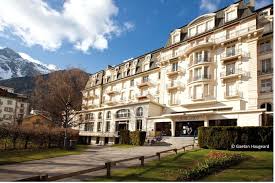Filed under: Travel pieces | Tags: alpine, Balmat, Biarritz, Chamonix, France, holidays, mer de glace, mountain cimbing, St. Gervais, Victorian era, winter sports
“O, wind, if winter comes, can spring be far behind?” Percy Bysshe Shelley
 I went to the Musee Alpine in Chamonix yesterday. I had been reluctant to go, given that I don’t like the cold nor winter sports and figured this is what the museum is composed of. But, I went, and it’s good that I did.
I went to the Musee Alpine in Chamonix yesterday. I had been reluctant to go, given that I don’t like the cold nor winter sports and figured this is what the museum is composed of. But, I went, and it’s good that I did.
The guide enunciated throughout her tour, was charming, informed, and a bonafide Chamonard to boot. What I discovered is that the name of Chamonix had changed perpetually due to boundaries being re drawn and small disputes between nearby communes. For example, St. Gervais had attempted to ‘claim’ Mont Blanc rather than Chamonix, despite its being miles away. And Turin had been a part of the Haute Savoie.
What is particularly interesting to me is how the village evolved over the last two hundred years. It was once solely inhabited by a very rural, agricultural people who were afraid of the mountains, believing them “cursed” by demons. I understand this – at the top of the mountains in the winter the howling of the wind is akin to what monsters might sound like. The residents scratched out a living during the six months of temperate weather with agricultural pursuits, then spent six months making garments out of wool, fur and wood. Now, it’s a place in which most of the residents capitalize on tourism, making it their primary source of income, from becoming mountain guides, ski instructors, and certified sportsmen, to the many shops and restaurants (only really) open during the winter and summer seasons. Additionally, many of the Chamonards have sold homes that have been in their families for generations to the wealthy French, Italians and Swiss who like to holiday in Chamonix.
Indeed, during the turn of the 18th and 19th century, Chamonix was much like Biarritz in that European aristocrats visited in droves, and as a consequence huge, grand hotels were built to accommodate them. These were later destroyed or turned into something else when the same aristocrats went elsewhere and France passed laws to give all French people the opportunity to go on holidays themselves.
From the late 18th century, Chamonix’s mountains also became a site for scientific study during a type of ‘enlightenment’ age. The stories of climbing Mont Blanc are astounding in their arduousness and danger. It’s no wonder the grumpy Jacques Balmat, who made the first ascent of Mont Blanc in the mid 1700’s, wearing wool and leather, is so famous around the valley. This eventually led to the arrival in droves of Victorians to Chamonix for ‘the mountain cure’ and glorious retreat for alpine sports, further cementing its designation as a tourism hot spot.
The culmination of the museum visit is a room that holds a series of paintings of the Mer de Glace, created by various visiting painters over the epochs. What one observes while looking at all of these paintings of the same subject, is that despite each of the paintings being almost identical in their vantage point, each of them looks slightly different. This is arguably not only a matter of perception, but also a metaphor for the dynamic aspects of the mountains and nature itself.